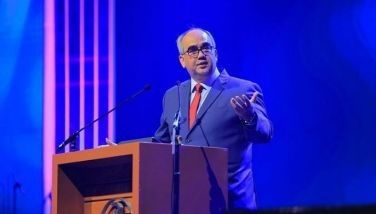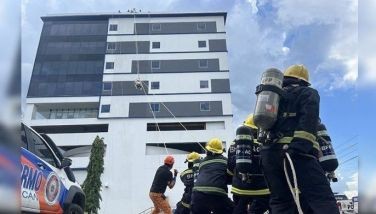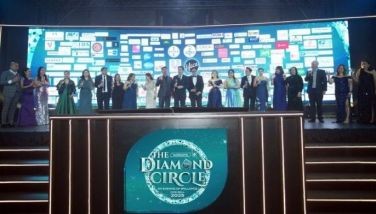A.V. Cruz on A. Panganiban
In a phone conversation, I casually informed lawyer Diane Franco that having heard Pagasa’s dire prediction, I would not be attending Artemio Panganiban III’s concert. She then said her colleague Avelino V. Cruz, himself a pianist, could comment on the concert.
As a young boy, Cruz performed with the National Artists’ Guild. His last public appearance was in 2012 at the Ayala Museum playing Rachmaninoff’s work for six hands with Nena del Rosario and Carminda Regala.
Herewith are Cruz’s commentaries on Panganiban’s concert.
The Asean Law Association (ALA) Philippines concert featuring Dr. Jose Artemio Panganiban III was indeed a UP night. Mr. Panganiban was a summa cum laude graduate of the UP School of Music, Maestro Arturo Molina, who conducted the MSO was once UP’s chairman of the String department, and soprano Lara Maigue is a UP Music major who is on track potentially as the country’s top soprano.
The concert opened with the National and the ALA Anthems, performed flawlessly “A Capella†by the Supreme Court Choir. The latter is the official anthem approved by the member nations of the Asean Law Association. Music was composed by myself and lyrics by Court of Appeals Justice Magdangal de Leon, son of national artist Felipe de Leon. My late father, Octavio Cruz, was of course, the Philippines’ most famous opera tenor.
Dr. Panganiban warmed up with a short Chopin Nocturne and three compositions by Liszt. The Etudes entitled “Waldesrauschen†(“Forrest Murmursâ€) and “Gnomenreigen†(“Dance of the Gnomesâ€) were performed with lyrical dexterity and purity, doing justice to the images of those titles. The “Spanish Rhapsody,â€admittedly one of Dr. Panganiban’s “tour de force,†evoked images of Spain, then a finale of powerful octaves in various ascending/descending scales, characteristic of Liszt’s works, which come close to being unplayable. Dr. Panganiban performed with such masculine power and bravura towards the end, as is demanded by the Liszt composition, leaving the audience wondering whether the Steinway Piano had survived or should be immediately tuned-up for the succeeding Rachmaninoff program.
Ms. Maigue fulfilled all expectations particularly on the high notes and “recitativos†of her signature song “Sa Kabukiranâ€, and Abelardo’s “Mutya ng Pasig.†She then regaled the audience with expressively lyrical simplicity in the popular “Mio Babbino Caro†of Puccini.
The Manila Symphony Orchestra, having warmed up with a lively and rousing rendition of Rossini’s “Barber of Seville,†proceeded to team up with Dr. Panganiban for Rachmaninoff’s most popular and beloved concerto. One must remember that this was a product of two years of blank space in the composition paper of Rachmaninoff, who had to struggle with neuro psychotherapy and recover in Italy where the sketches of this concerto were first written.
Dr. Panganiban showed mastery of technique and virtuosity of interpretation in all three movements, while the MSO showed one and all, why it is the country’s leading symphony orchestra. The first movement was performed fluently by Dr. Panganiban, in a way that fulfilled the promise of “more to come†in the succeeding two movements. I was particularly moved by the “Adagio†rendition of the second movement where Dr. Panganiban managed to combine passion and romanticism out of its lovely, plaintive melody. As the piece transformed into a 3/2 time signature, both orchestra and pianist conspired to render a well balanced triplet on the accompaniment while sustaining a simple duple meter of two beats in the upper melody. In law, this would be equivalent to the SC reconciling an inconsistent statute with a Constitutional imperative. Both orchestra and piano then switched back and forth from accompanist to melody maker, a point in the composition that I pointed out to Chief Justice Meilou Sereno who was seated beside me, and to which she delightfully reacted.
The “Allegro Scherzando,†third movement, wowed the audience with brilliant piano passages by Dr. Panganiban and martial brass and percussions which balanced the main theme by the MSO, a longing romantic melody now known to the public as “Full Moon and Empty Arms.†The “maestro†finale and climax proved a true crowd pleaser with both Dr. Panganiban and MSO showing the audience how complicated but synchronized counter-points can be cleanly fulfilled by both orchestra and pianist. The fireworks of the final passages and virtuosity of his fingers towards the end of such a grueling evening of performance, which to my mind elicits the question why Dr. Panganiban should not be spending more time in Carnegie Hall, New York where he lives, rather than in New York CitiBank, N.Y. as Director, which is his parallel career.
- Latest
- Trending



























